In a previous post, I talked about places you could visit within day trips from Perth. However, while I was there, me and my friend Shelly took a longer trip out further north, visiting a few places that required overnight stays. It’s testament to the sheer size of Western Australia that if you look on a map, even these places look really close to Perth compared with more distant places like Port Hedland and Purnululu. The majority of our trip was spent chasing wildflowers, but we also saw some local history, a pink lake, and a very spectacular dark sky.
Hutt Lagoon – the Pink Lake
Hutt Lagoon is a long, thin, lake just inside the western coast of Australia, a shade more than 500km north of Perth. It’s known as a marine salt lake, and between it and the ocean is a long ridge, along which the main road runs giving great views out over the water.
The main attraction though is its colour. Unlike most bodies of water which are transparent-bordering-on-blue, Hutt Lagoon looks pink, especially from the ridge above when the sun shines on it.
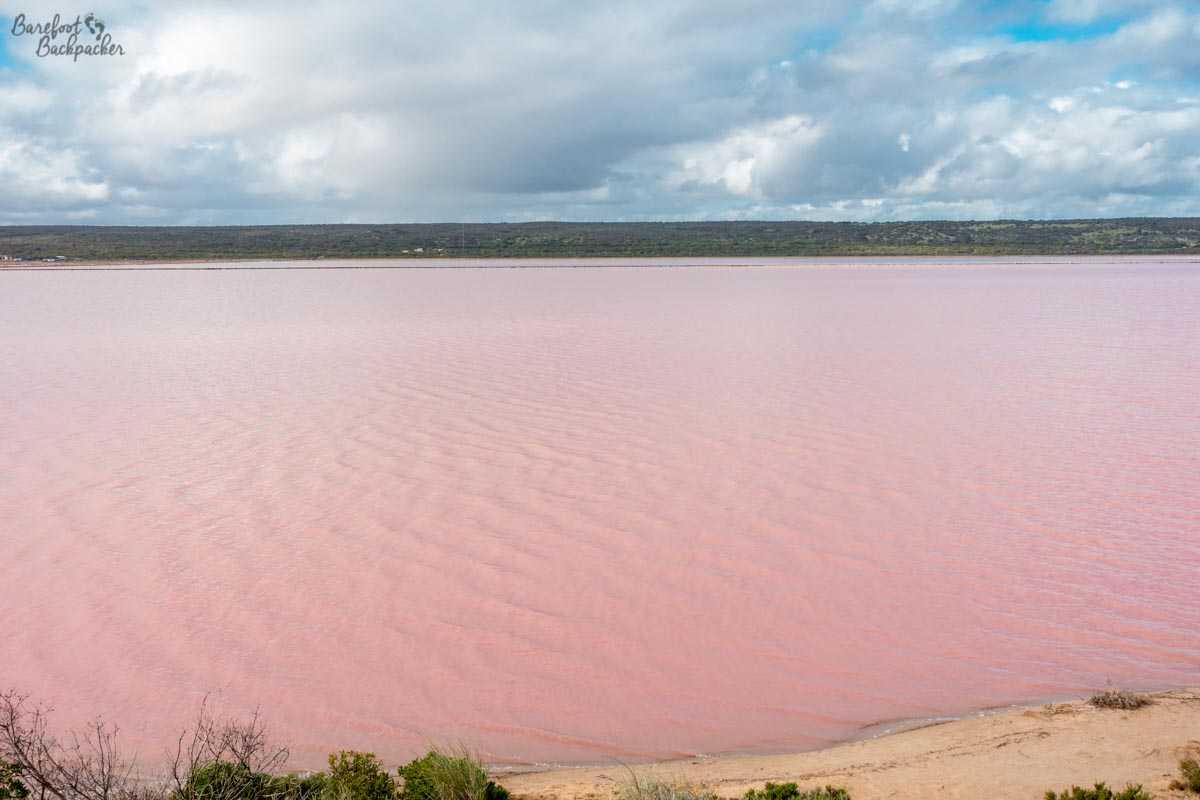
It is rather pink in this light, isn’t it?
The reason for its colour is a large population of a certain type of algae. These (which my research tells me are known as ‘Dunaliella salina’ and are, oddly, green) are particularly suited to high-salt environments – indeed one of the few things that can survive in such places – and produce certain chemicals to help photosynthesise better. One of these chemicals is beta-carotene. If that chemical’s name rings a bell, it’s because it’s the substance that gives carrots and sweet potatoes their distinctive orange hue (it also turns your skin slightly orange if you eat too much of them). For some reason, in this particular environment, it makes the lake look pink. I don’t know why; you’d have to ask a biochemist.
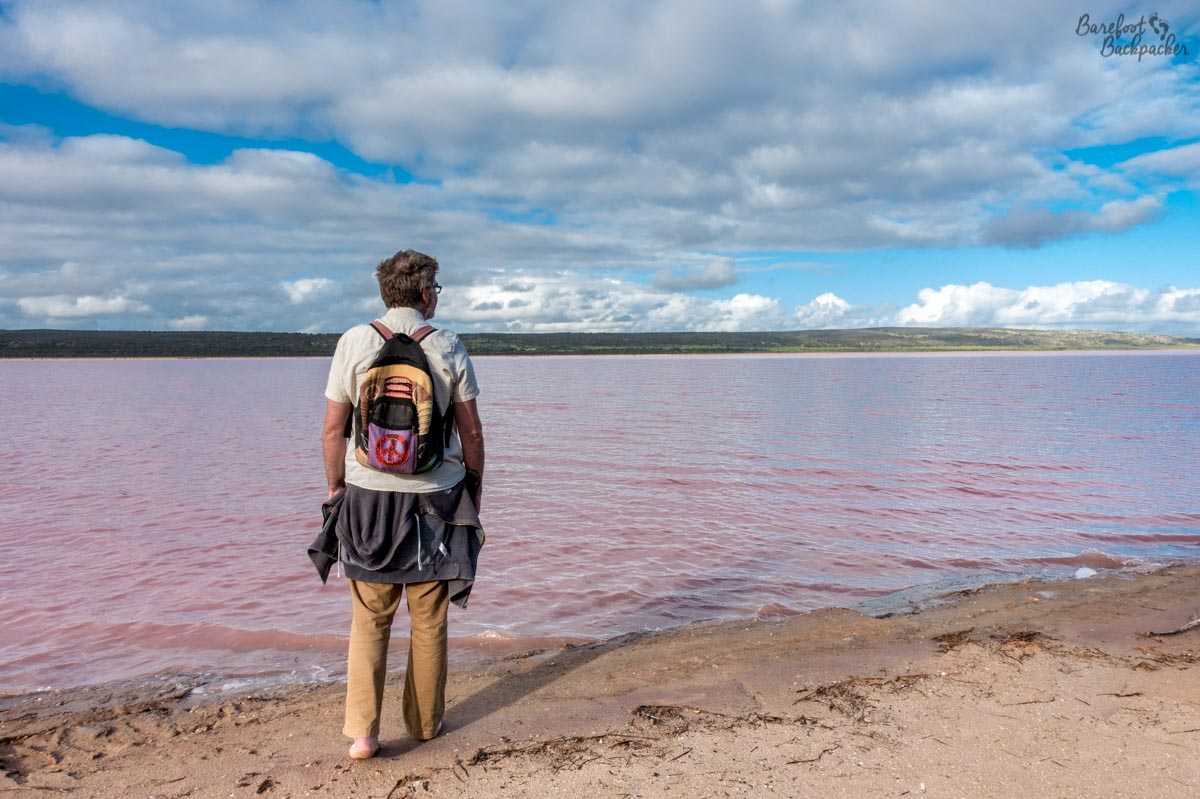
I’m looking out over the lake, presumably pretending to be thoughtfully pondering the pink.
It’s one of a handful of similar lakes in the world; there’s another on the south coast of Western Australia near Esperance (called “Pink Lake”, although changes in salinity have made the colour of this lake fade somewhat), while in Senegal, Lake Retba is also well-known and visited.

People taking pictures and selfies at the lake shoreline.
Due to its make-up it’s not a lake I’d suggest swimming in – I didn’t even paddle, to be fair – but it’s a great lake to stand and look at – and, on our visit, help some passing tourists take fun Instagram Story posts. There is life in the lake, limited mainly to a type of prawn that loves salty conditions, but it’s not one I’d eat. Because I’m not a fish or a bird.
Local History – Geraldton and Lynton
Nearby Hutt Lagoon is the coastal town of Geraldton. Although aboriginal peoples had been living in the area for tens of thousands of years, the town itself was founded by immigrant Europeans around 1850, and many of the buildings in the town centre still date from the 19th Century, making it have a strangely historic feel.
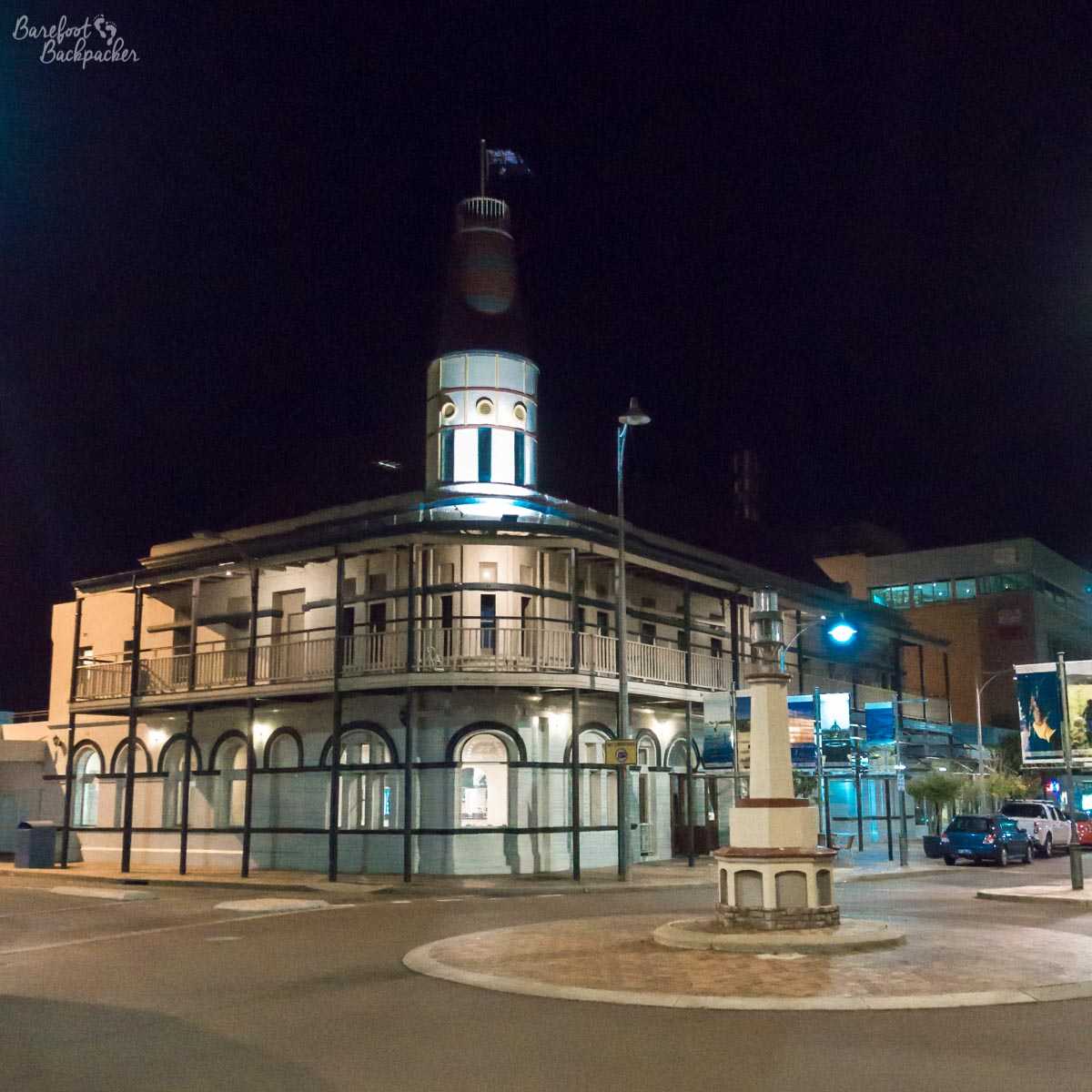
Geraldton at night.
For instance, one of these old buildings is the Point Moore lighthouse, constructed in the late 1870s and the oldest lighthouse still in operation in the country. This reflects the fact Geraldton’s history (and indeed present) is intrinsically tied to the sea; it’s one of the largest ports on this side of the coast, and much of the tourist infrastructure is geared to water- and beach-based activities, like windsurfing, snorkelling, and fishing.
One of the largest tourist draws however is a much less joyful spot. At the top of one of the hills in the suburbs of the town is a memorial to a wartime maritime disaster. In November 1941, the HMAS Sydney was sunk in a naval battle with the German cruiser Kormoran, with the loss of all hands; the battle took place at Shark Bay, off the west coast of Western Australia and, relatively speaking, not far from Geraldton.
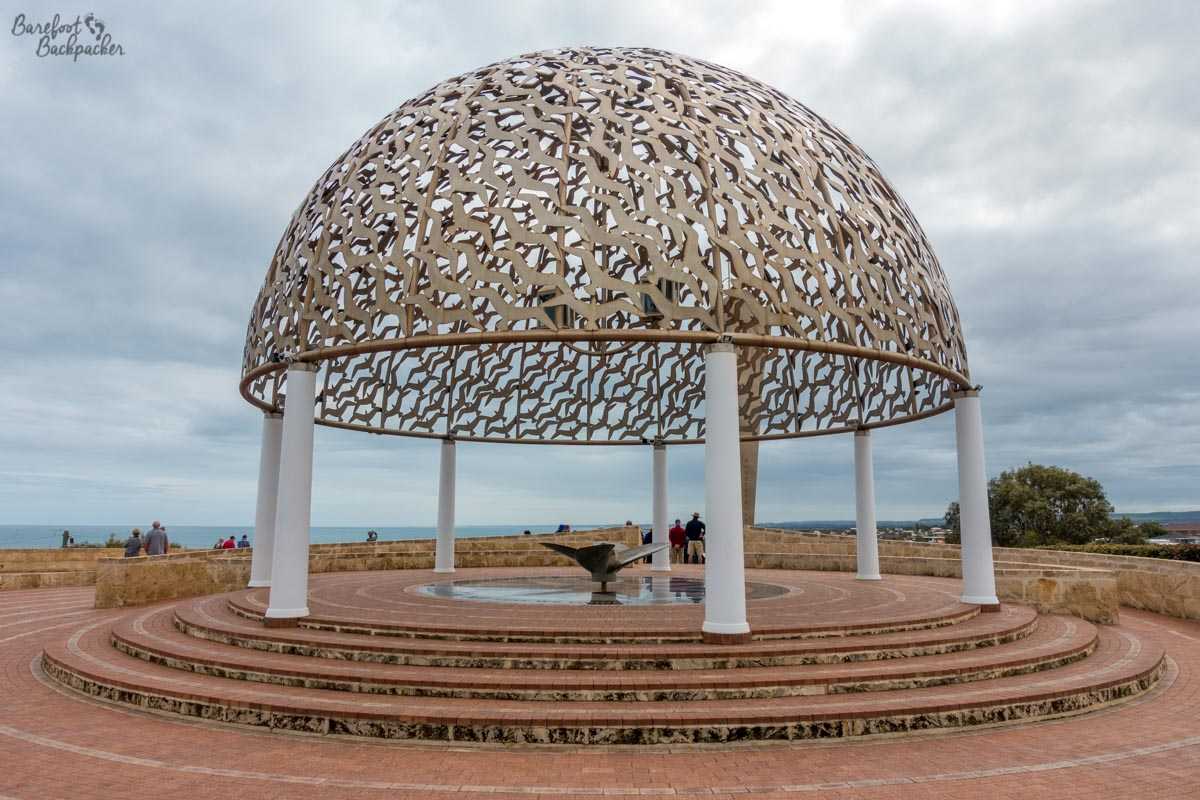
The main memorial, the dome with seagulls.
The memorial is pretty large, consisting primarily of a large metallic dome decorated with 645 birds (seagulls, apparently) to commemorate the number of lives lost. The dome stands in the centre of a circular yard area, the outer walls of which are lined with the list of names of all the people who died. There’s also a sunken relief depicting the exact location (geographic coordinates) of where the ship sank, whilst a statue of a woman stands on the front side of the yard, looking mournfully out to sea and waiting in vain for the sailors to return.

The statue of the woman looking out to sea.
It’s quite a solemn spot, and one can take a guided tour of the monument. Although this sounds weird given its small size, what the guides do is tell you the stories of the ship and the people who died, as well as the history of the memorial.
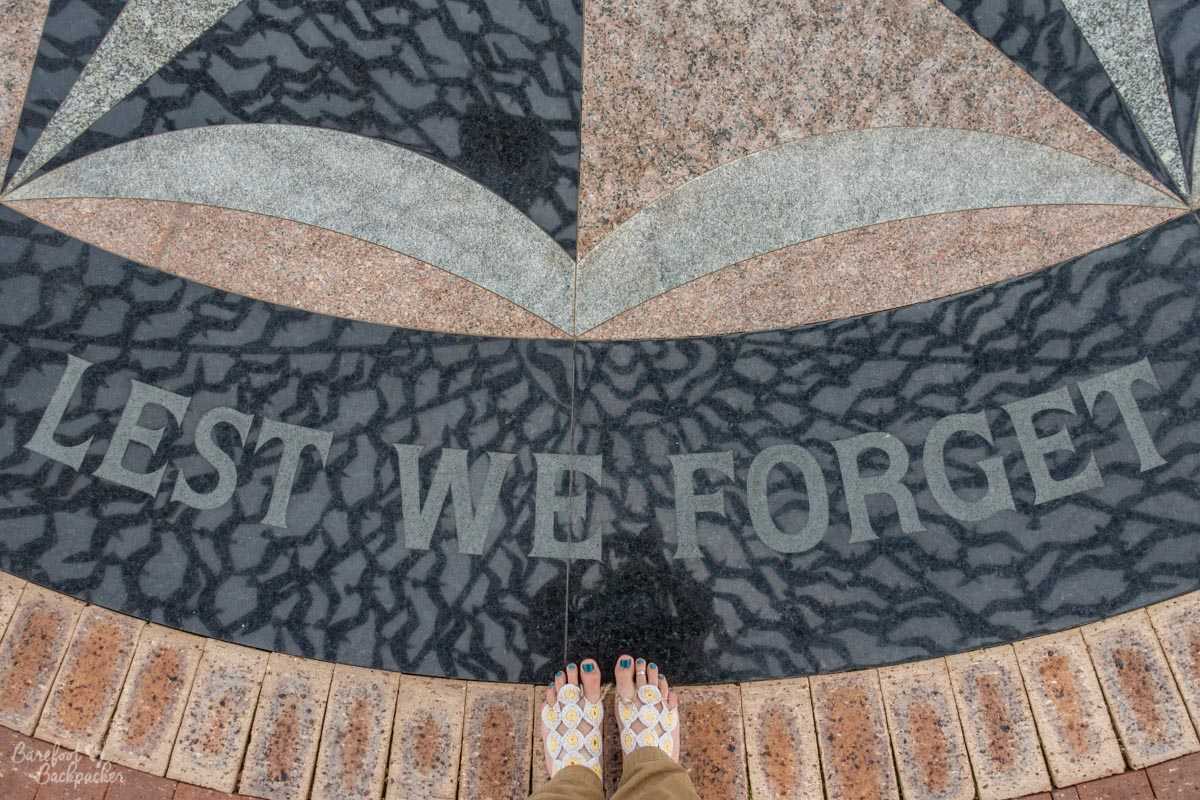
Part of the memorial – a simple thought.
Further north, and in fact not far from Hutt Lagoon, lie the remains of what was known as the Lynton Convict Hiring Depot. This small site is made up of a series of ruined buildings, some little more than foundations, that mark the spot of one of what were effectively ‘detention centres’ for people who had been transported from the UK to Australia for being criminals.
At its height (the mid 1850s) this was a small self-contained village, with a store and even a small hospital. The convicts housed here were generally used as the workforce at a nearby lead mine. I say ‘nearby’; 60km I guess is ‘close’ for Western Australia – and in fact this was part of the problem.
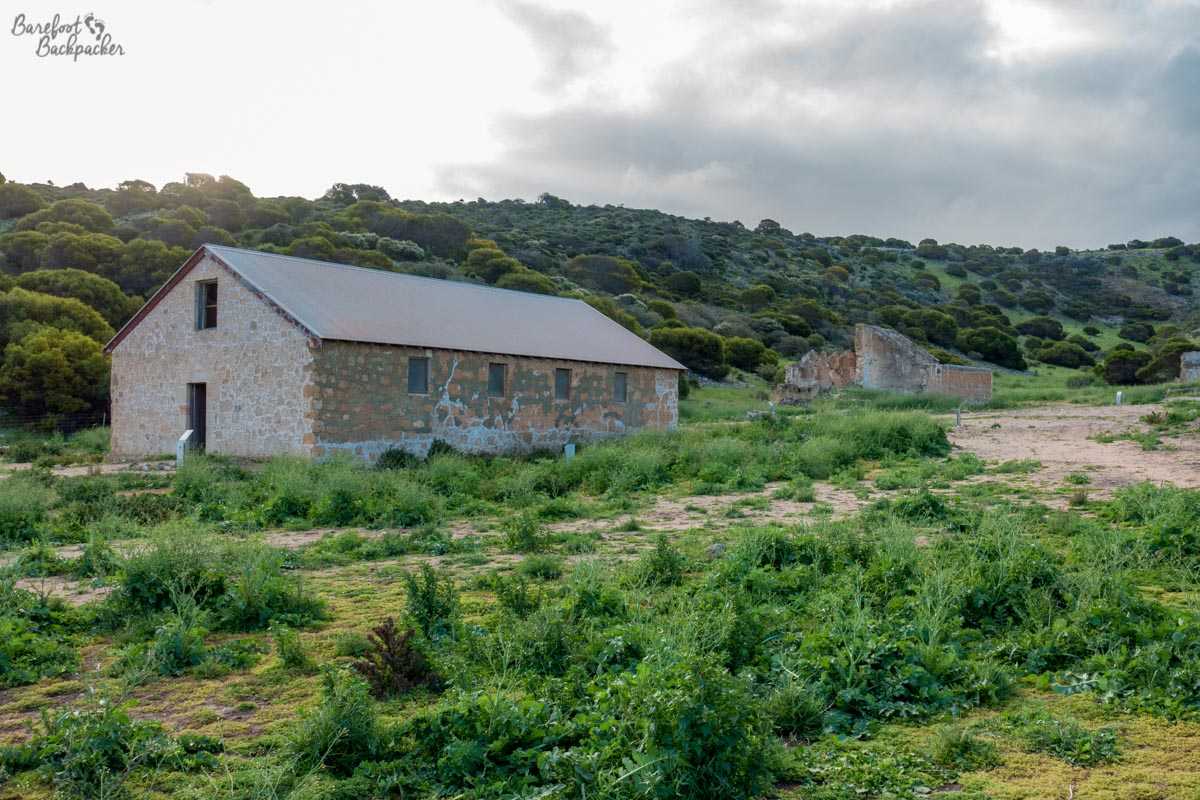
The surviving building, now a very small museum.
The site was only used for about four years, and it took about three of them to build the buildings in question. A combination of the site being very poor for agriculture (leading to high prevalence of scurvy), the site being so far from the mine as to make transfer of both labour and materials uneconomic, and a recession in the mining industry anyway, meant that not long after construction finished, the whole population were moved to a site at Champion Bay, in the Geraldton suburbs.
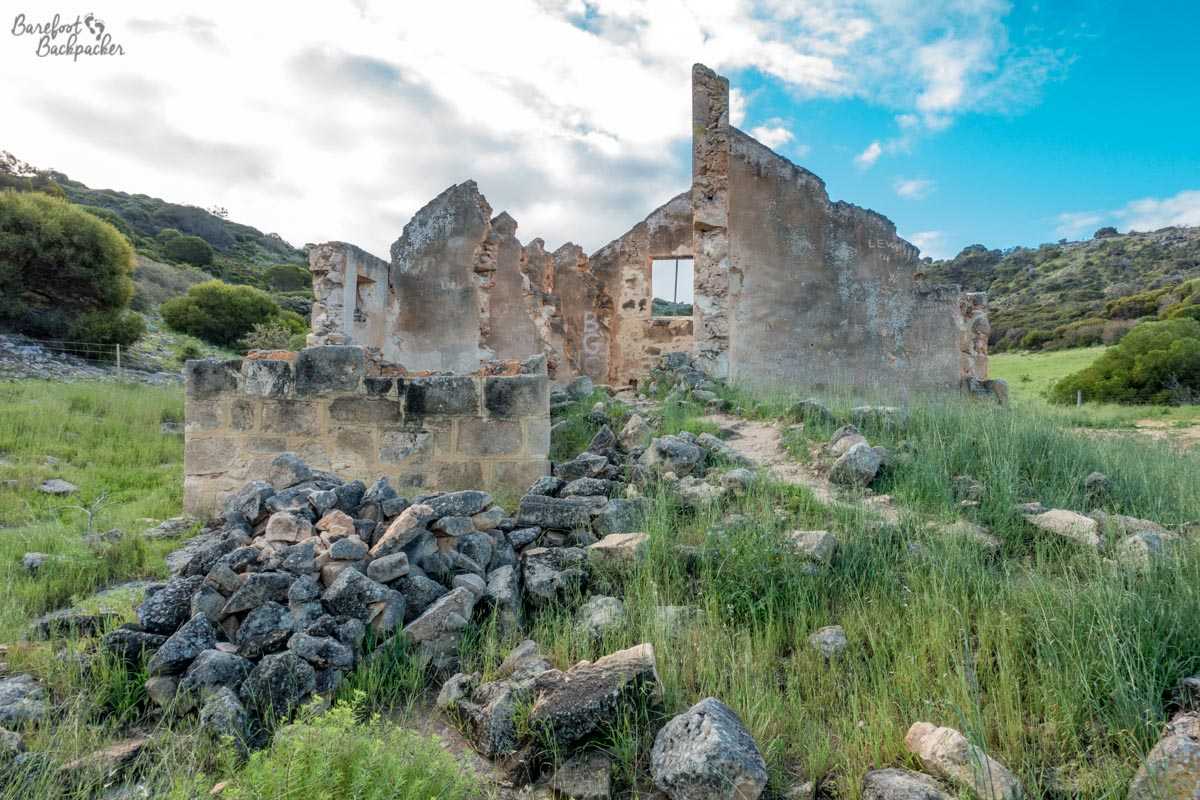
One of the other ruined buildings.
It’s quite weird now to wander through the overgrown ruins and think about the people who were forced to live here. One of the buildings (the main depot/hiring building itself) is still largely intact and houses a display giving an overview of the history of the site, but for the rest of the site it’s largely a case of using your imagination. The point being though is that most of the other similar sites have been long lost to history, so this is one of the few examples that still exist, even in ruin format.
Further inland, near the alternatively-pronounced town of Mingenew (it’s a three-syllable word with a ‘hard g’), are the ruins of a site called ‘Depot Hill’. Originally a spot where early immigrant explorers buried some supplies on one of their journeys in the area, it ended up being a useful stop-over point for decades of subsequent travellers and prospectors. It was also used as an army firing range during WW2, and remains of this can be seen in the undergrowth – there’s the ruins of the long narrow trench used for firing ordnance, that one can clamber down into and peer around.

The ruined overgrown firing range channel.
In the area are a couple of hills and the valley of a small river. It’s most noted these days for being a picnicking spot and for exploring the flora and fauna; the latter including hordes of fire ants so make sure when you’re eating, you do so on a bench and not on the ground. And wear closed shoes.
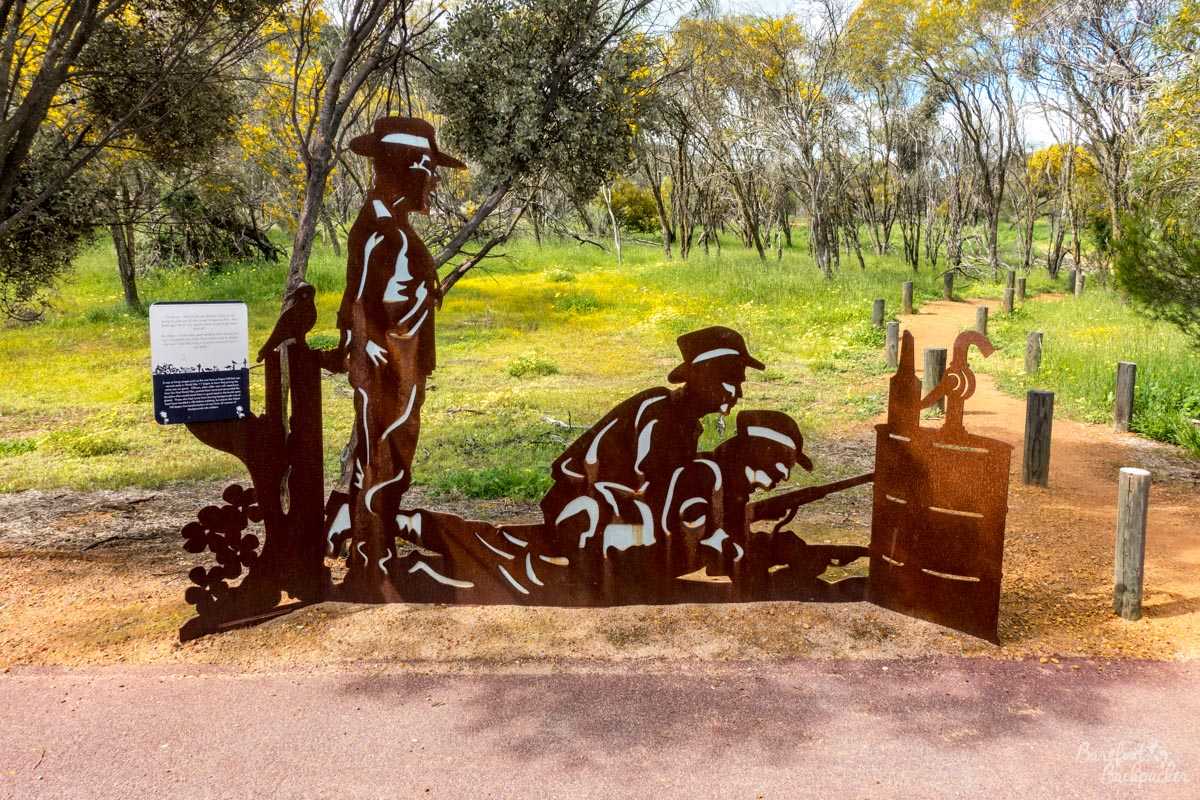
The sign at the entrance to Depot Hill.
Coalseam – Stargazing
Also near Mingenew is the Coalseam Conservation Park. The name is self-explanatory – there is coal here, easily accessible (on the surface, even), although apparently it’s generally of low quality and while there are some remnants of preliminary mines and wells having been dug, nothing was mined here on an industrial or commercial basis.

Baby Ian And Dave, sitting on the rocks by the river at Coalseam
These days the site, which contains hills, woodland, and great views over a river valley, is used as a camping ground. We shared a tent (which took some pitching up in the dark as we didn’t have all the necessary poles); it’s always good to get close to nature like this, and even though this was Australia there were no issues with bugs or spiders. Unlike in Scotland where we’d’ve been eaten alive by midges.
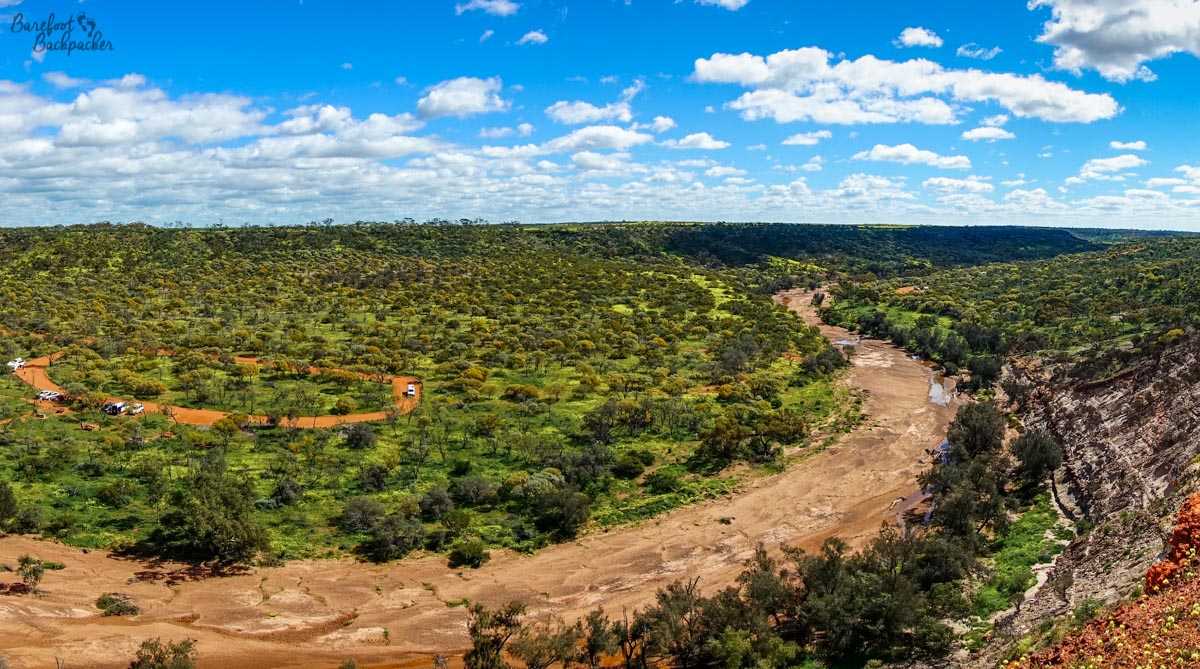
The river valley and plains at Coalseam.
It’s popular for two reasons; it’s in the heart of wildflower country, while its location, several km from even the nearest village, is an excellent dark-sky spot and therefore very suitable for stargazing. Indeed, one of the rules of the campsite is no external lighting, so even in the mid-evening there’s pretty much no light pollution.

The night sky at Coalseam.
The effects of this are immense. Even just lying on the ground and staring upwards, your eyes soon adjust to see the whole sky covered in starlight – it’s so clear you can even see the Milky Way, which is almost impossible back in Sheffield, even in Kirkby-in-Ashfield.
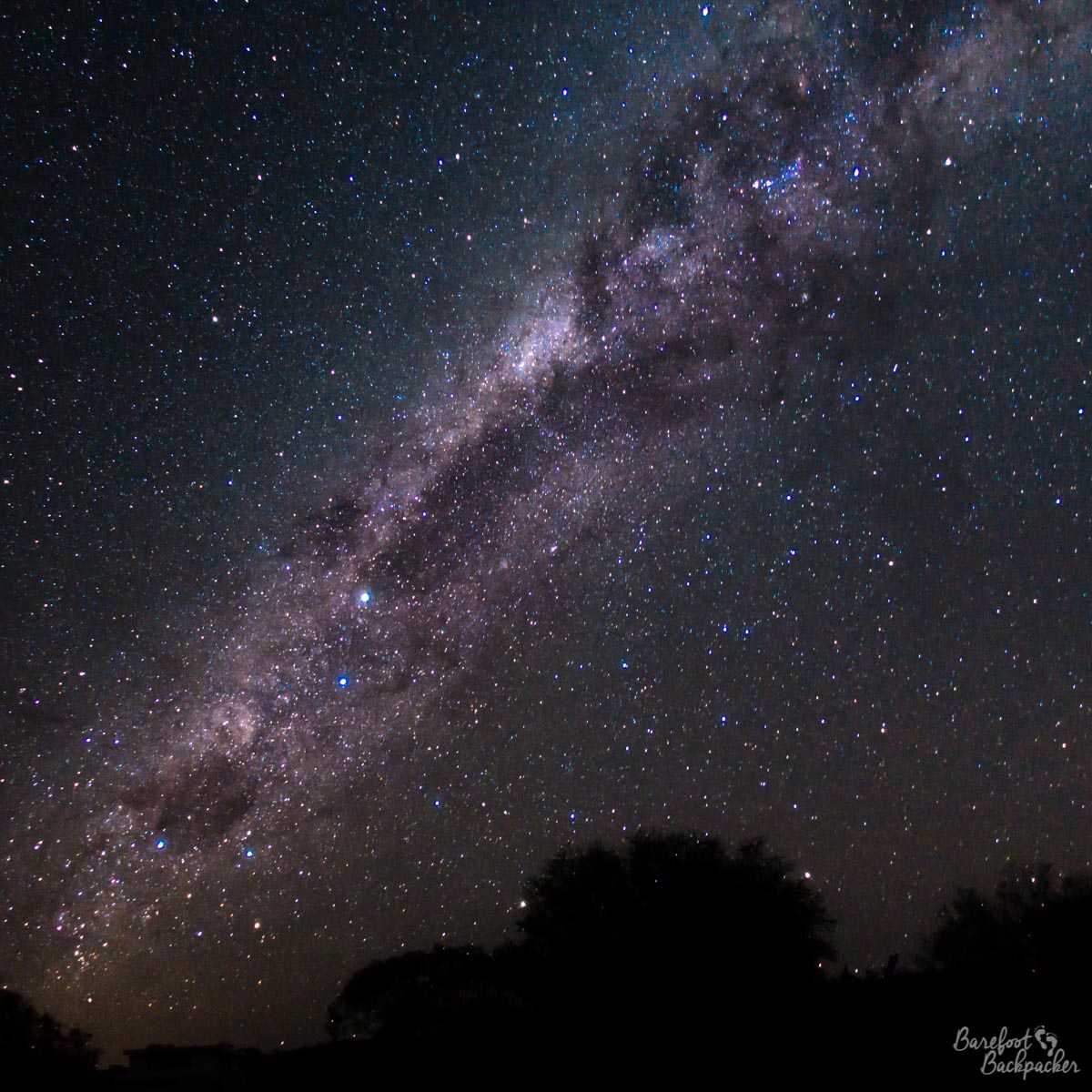
The night sky and Milky Way at Coalseam.
This, however, is a place for binoculars, telescopes, and good cameras. My camera is a high-end compact and produces some decent pictures, but I was working at the limit of my camera’s capabilities. Shelly could take far better pictures with her DSLR, and that led to some very strange and experimental effects, such as playing with torchlight on a long exposure, and my trying to stand perfectly still for 30 seconds while she took images of me in front of a starfield.
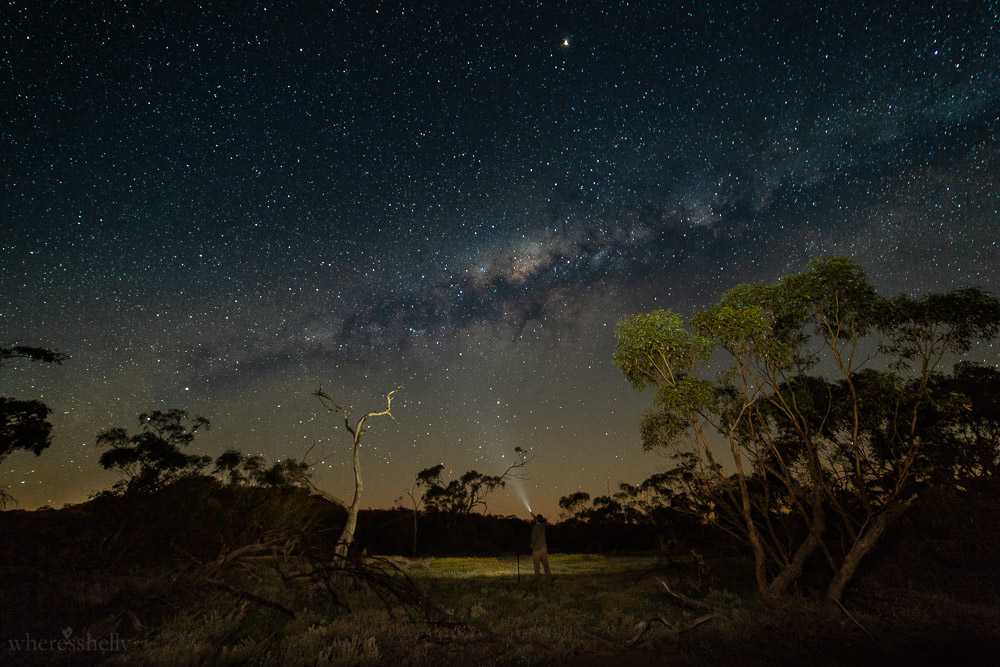
The night sky at Coalseam – I’m waving a torch and trying to stand still for 30 seconds, while my friend Shelly takes a better picture than I can manage.
I think it worked pretty well.
Wildflowers – ‘Everlastings Love’
Now, the reason for our trip out this way was to view the wildflowers. They’re more properly known as ‘everlastings’ (due to their relatively long flowering season), though it’s the period in Spring around late August and early September that they’re really in season in the area convenient to Perth. Now, viewing flowers might seem quite a mundane and under-exciting reason for a multi-day trip out into the wild countryside, especially for me. I mean, they’re just flowers, right?
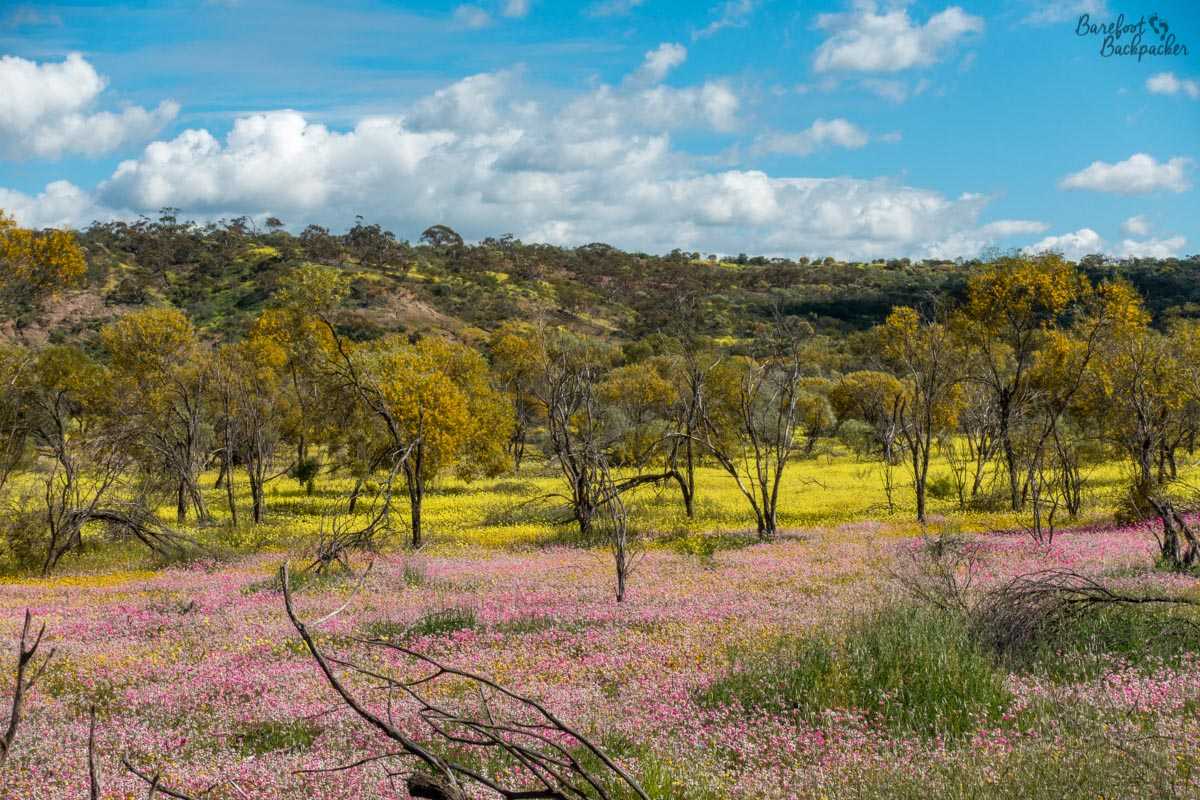
They’re just flowers …
I mean …
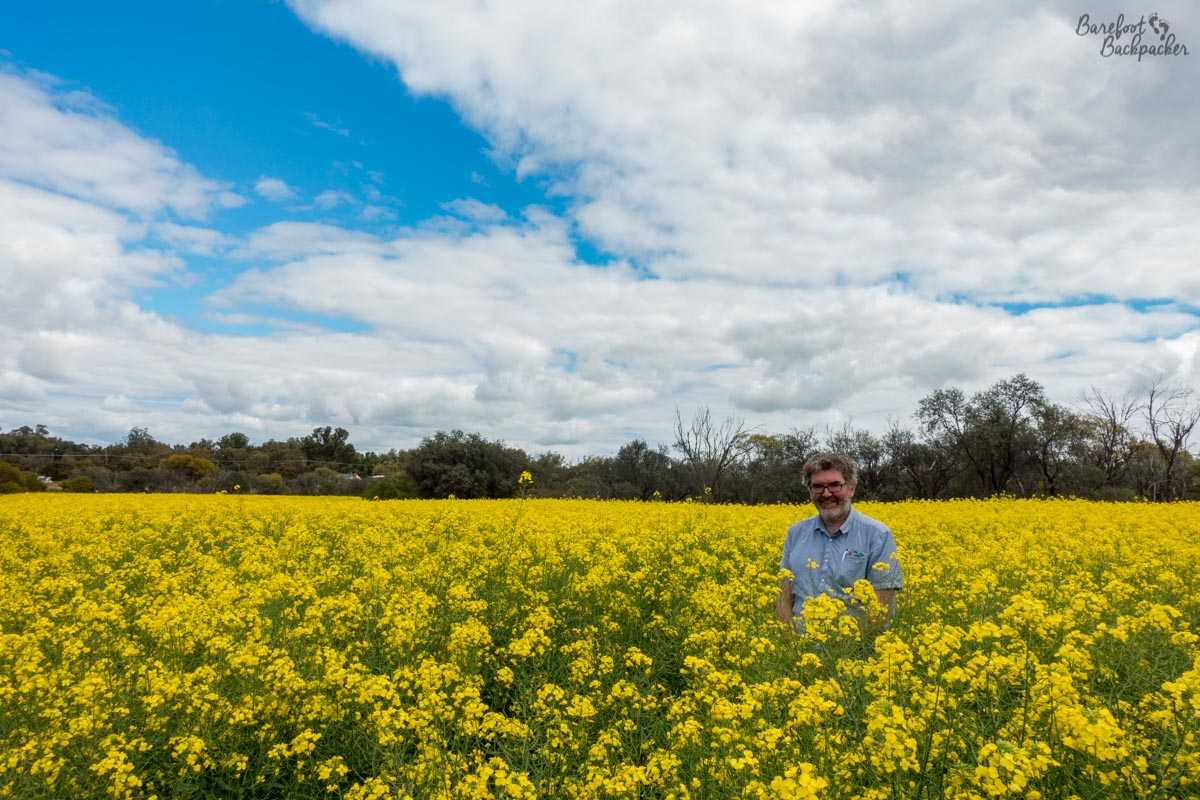
Fields and fields of flowers …
They were everywhere …
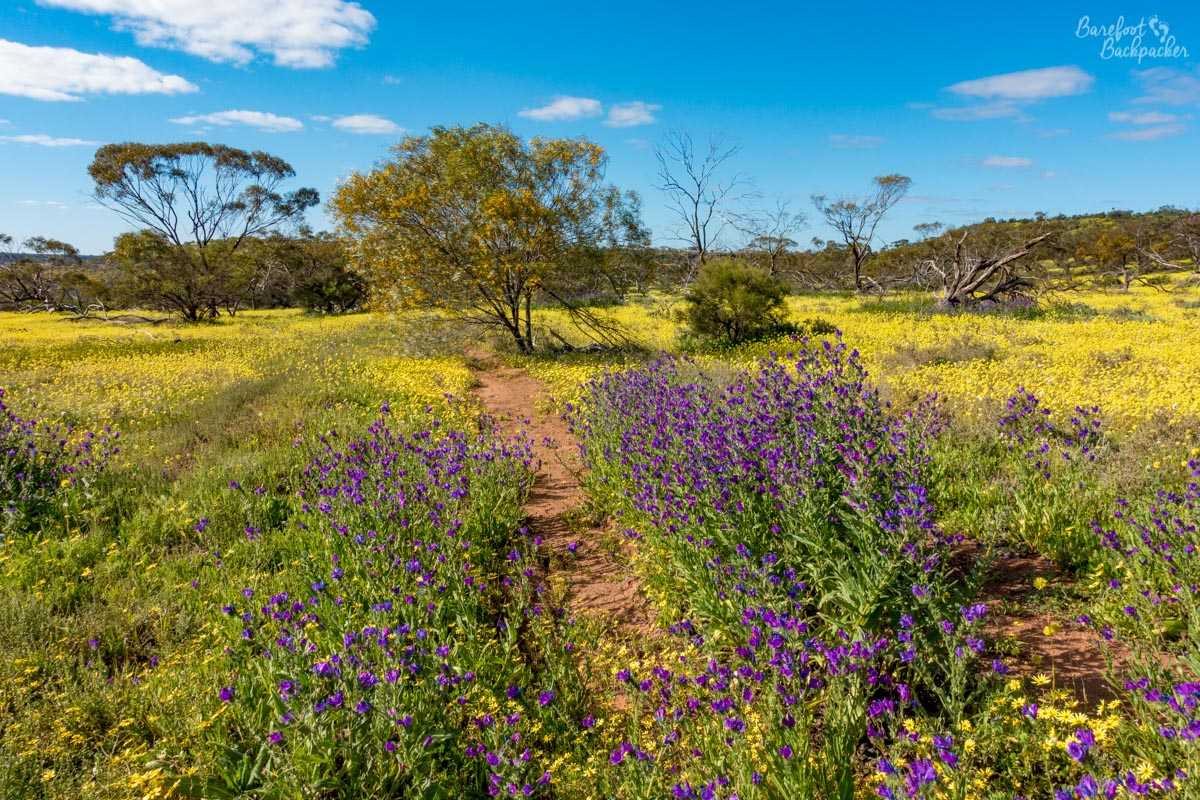
Example of wildflowers at Depot Hill
Most of them were, as you can see, covering fields by the roadsides. You’ll also notice the different colours of them. It’s estimated that across Western Australia as a whole, there are over 12,000 species, of which 60% are unique to the state, so while you can see ‘wild flowers’ pretty much everywhere, you can only see these ‘everlastings’ here in WA. They’re members of the Asteraceae family – in common parlance, daisies. And as you know, daisies are my favourite flower, cos I’m a huge hippie.
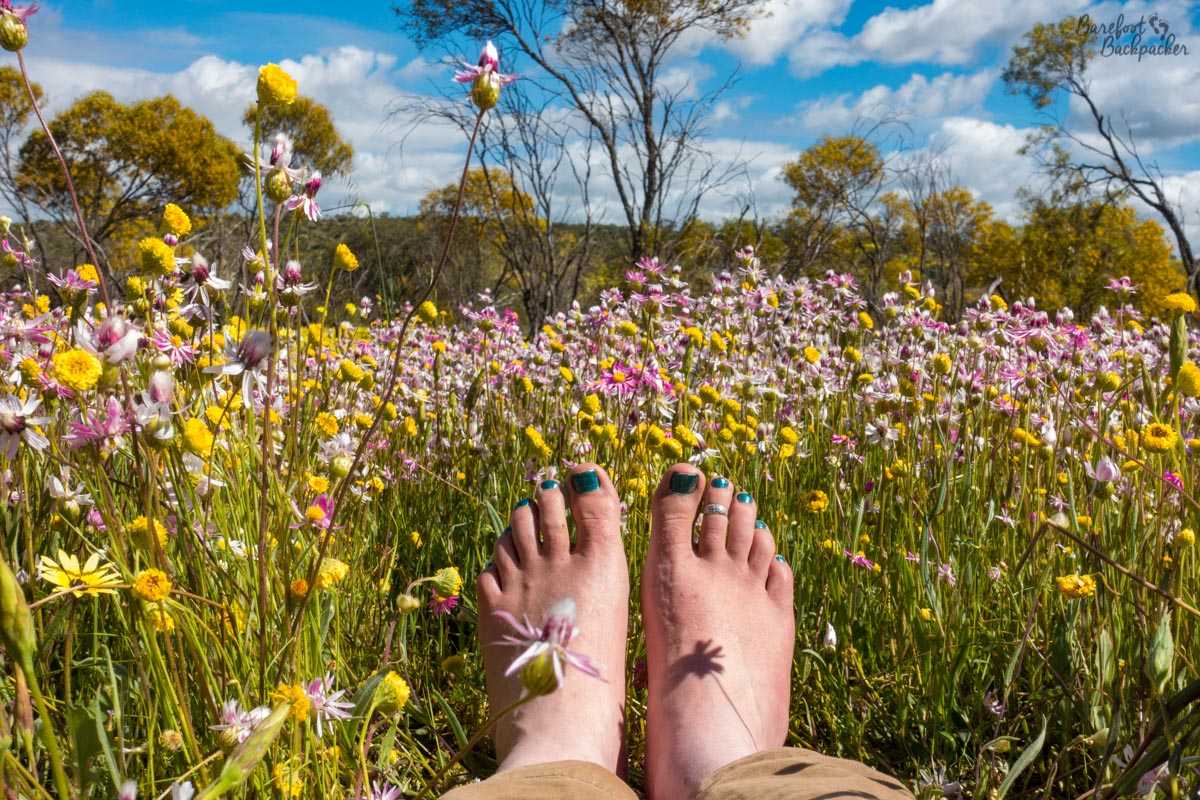
The combination of wildflowers and bare feet is a stereotyped one, but definitely appropriate.
They’re not just found on the fields and hillsides, though. Near Pinder, just inside the Shire of Murchison (the border of which Shelly considers to be the ‘start of the Australian Outback’), just by the side of the road, are natural ‘wreaths’ of everlastings (specifically, ‘lechenaultia macrantha’, apparently). This pretty unique growth brings quite a few tourists, but they’re worth looking at.
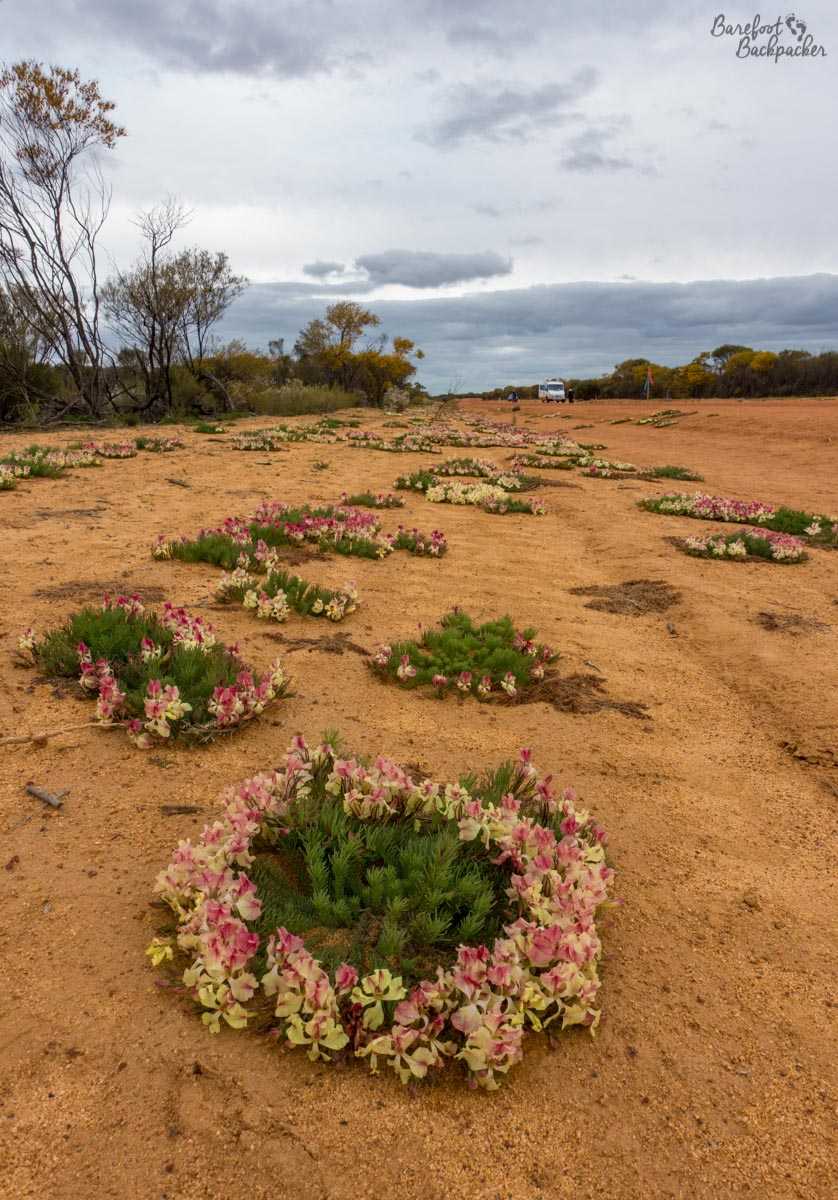
Wreath flowers lining the road near Pindar.

Another barefoot-and-wildflower picture, obviously.
As an aside, the Shire of Murchison has an area of 49,500km², which is similar to Slovakia. Unlike Slovakia, however, the population is around 114. That is not a typo or transcription error.

Shire of Murchison signpost. The scenery here is very reminiscent of West Africa.
Everlastings are found in huge numbers around Coalseam, Depot Hill, and the town of Mingenew, which kind of centres itself as being ‘the’ place to base yourself to see them. But they’re visible across the whole of the state, and the season spreads slowly southwards – from July in the north to as late as October around Albany on the southern coast.
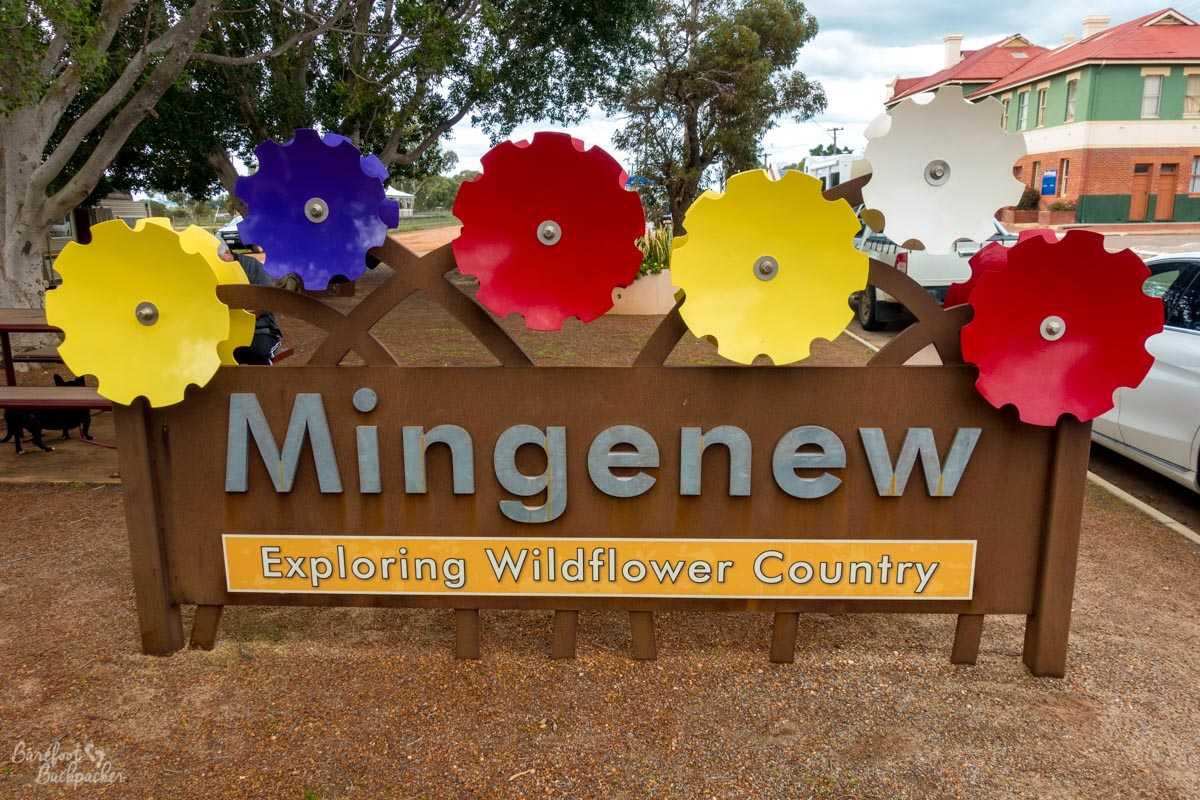
‘Exploring Wildflower Country’ in the town of Mingenew. It’s got a really good bakery.
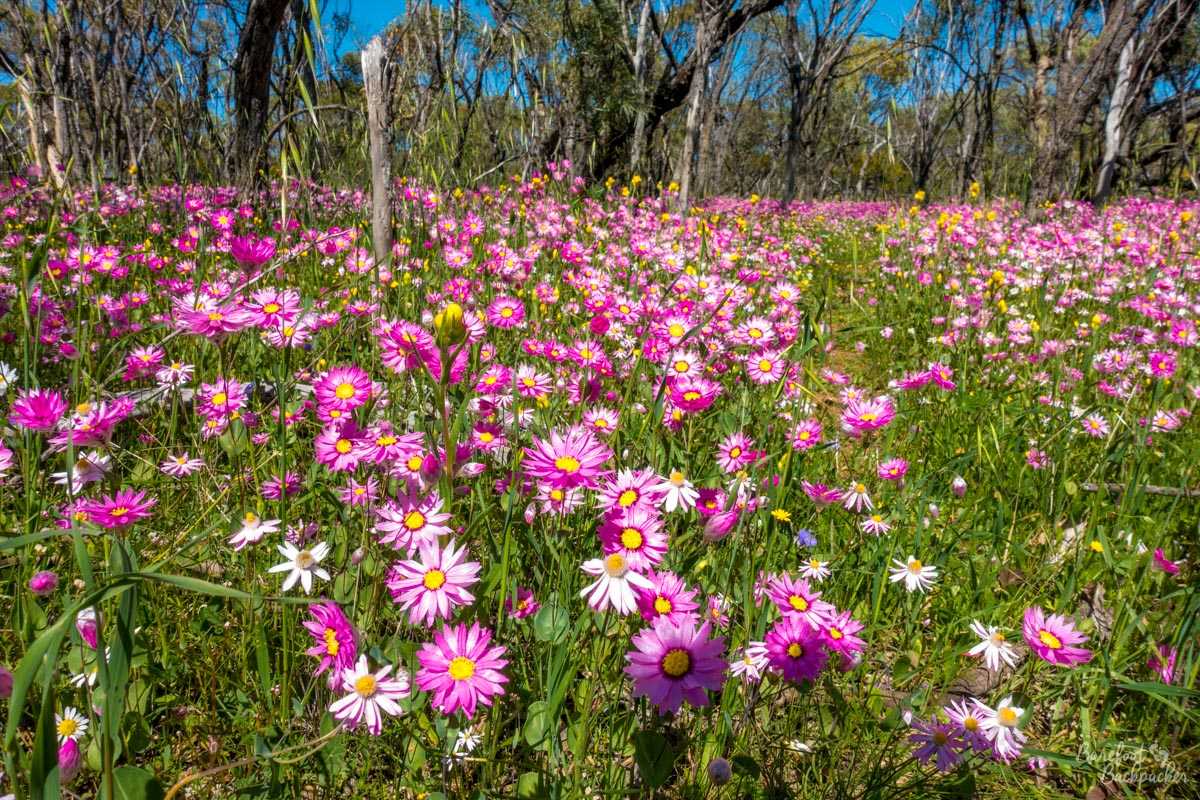
Close-up of some everlastings by the roadside in Western Australia.
Its important to treat them correctly – don’t pick them, try not to stand on them, don’t take them home and plant them in your own garden, etc. I mention this because there are images of my holding them etc – these were flowers which had already been previously uprooted and would otherwise have just rotted away anyway. I also made sure to dispose of them safely, or at least in an environment from which they wouldn’t pollute or affect other parts of the country. To be precise, the passenger door pocket of Shelly’s car.

Bare feet on the dashboard, flowers between the toes. Such a hippie!